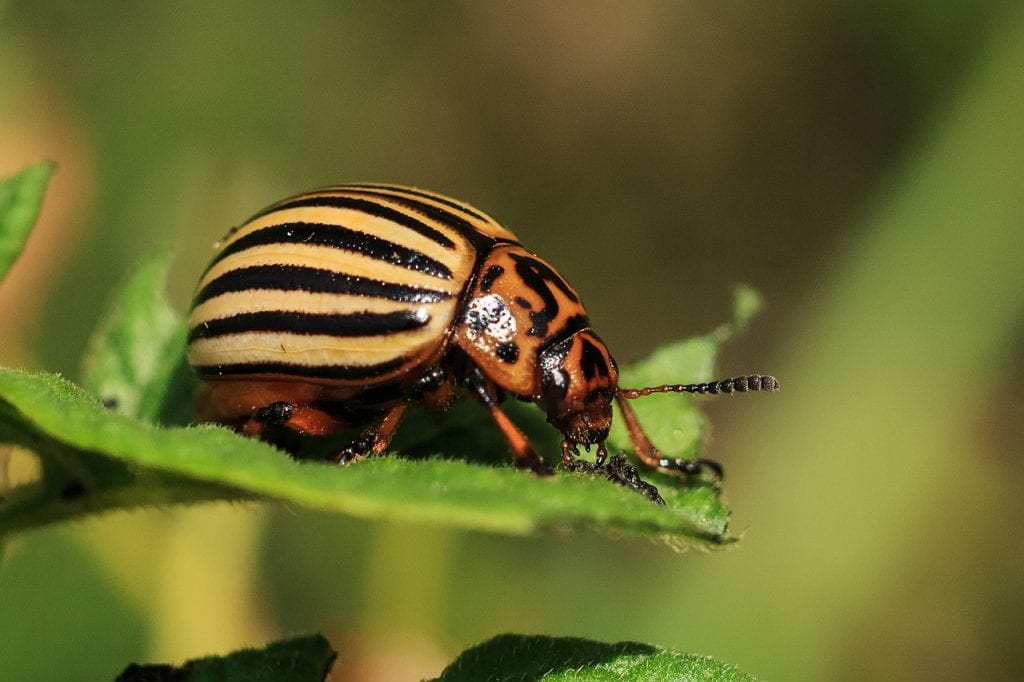
Y’all ever heard of locusts? Bet you have. Yes, we’re talking the numero uno, our pest magnifico, the ones famously featured in the Holy Bible as a force of famine, set upon an ancient Egyptian Pharoah as divine punishment for enslaving an entire ethnic group. Surely, the locust is the prime example of an agricultural pest, demonstrating the most dramatic, destructive pest behaviour that we know. This National Geographic webpage does a good job explaining their biology, behaviour, and significance.

Unfortunately for us, there’s been a particularly bad upsurge of desert locust activity lately, putting affected countries at huge risk of food insecurity issues, according to the Food and Agricultural Organisation of the United Nations (FAO) in their latest global response plan to the crisis (FAO, 2020). Increased rainfall, due in big part to cyclonic activity in 2018 and 2019, provided the conditions for desert locusts to thrive and spread from the Middle East to East Africa and Southwest Asia over the past 2 years (FAO, 2020). As I write this, desert locusts continue to wreak havoc (FAO, last accessed 19th September 2020).

Some countries, like Kenya, were caught off guard, having not experienced locust swarms in 70 years (Baskar, 2020), and have taken to spraying them down with chemical insecticides, despite potentially deleterious environmental impacts (Lacave, 2020). Meanwhile, with the aid of the FAO (Stokstad, 2020), Somalia has been using a biopesticide containing Metarhizium acridum spores to successfully control populations of locust nymphs (FAO, last accessed 19th September 2020). As the Metarhizium acridum fungus only affects locusts and their relatives (Stokstad, 2020), it is less likely to cause unintentional harm to the environment when compared to chemical insecticides.
The main drawback of the M. Acridum biopesticide is its low potency compared to chemical insecticides (Stokstad, 2020). It works best on young nymphs (Stokstad, 2020), while chemical insecticides can be used against flying swarms as well (Lacave, 2020). This means chemical insecticides may still be necessary to take out established adult swarms when it comes down to it.
And another thing. Other forms of insect pests will not be affected by the biopesticide due to its specificity. Countries may not find it appealing to keep stores of a niche insecticide just to kill locusts when there are chemical insecticides that a) are more effective (Stokstad, 2020) and b) can deal with insect pest outbreaks of other forms. Can’t really blame them, either.
Projected increases in overall rainfall and frequency of tropical cyclones due to global warming (Cheng, 2019) could lead to even larger locust population booms as the years go by (Cressman as cited by Agarwal & Jain, 2020). Ideally, susceptible countries should explore and plan out effective and eco-friendly solutions before the next wave arrives, and keep the usage of harmful conventional insecticides to a minimum, perhaps as an emergency option against mature swarms. Improvements to existing technology, like a more potent M. Acridum biopesticide, would definitely make that process easier. And I’m hoping organisations like the FAO will continue to support and fund such efforts as needed.
Soooooo yeah. Don’t enslave minorities (I’m looking at you, Pharoah) and stay safe, y’all.
References
1. National Geographic (n.d.). Locusts. Retrieved September 19, 2020, from https://www.nationalgeographic.com/animals/invertebrates/group/locusts/
2. Food and Agriculture Organisation of the United Nations. (2020). Desert Locust Upsurge Global Response Plan January–December 2020. http://www.fao.org/3/ca9249en/CA9249EN.pdf
3. Food and Agriculture Organisation of the United Nations. (n.d.). Desert Locust situation update 18 September 2020. Retrieved September 19, 2020, from http://www.fao.org/ag/locusts/en/info/info/index.html
4. Baskar, P. (2020, June 14). Locusts Are A Plague Of Biblical Scope In 2020. Why? And … What Are They Exactly? Retrieved September 20, 2020, from https://www.npr.org/sections/goatsandsoda/2020/06/14/876002404/locusts-are-a-plague-of-biblical-scope-in-2020-why-and-what-are-they-exactly
5. Lacave, C. (2020, February 21). Kenya opts for pesticides to contain locust infestations. Retrieved September 20, 2020, from https://www.theafricareport.com/23745/kenya-opts-for-pesticides-to-contain-locust-infestations/#:~:text=As the devastating locust invasion,possible risks to the environment
6. Stokstad, E. (2020, February 12). In Somalia, an unprecedented effort to kill massive locust swarms with biocontrol. Retrieved September 20, 2020, from https://www.sciencemag.org/news/2020/02/somalia-unprecedented-effort-kill-massive-locust-swarms-biocontrol
7. Ngumbi, E. N. (2020, February 19). Africa’s most notorious insects – the bugs that hit agriculture the hardest. Retrieved September 19, 2020, from https://theconversation.com/africas-most-notorious-insects-the-bugs-that-hit-agriculture-the-hardest-83107
8. Cheng, L., Abraham, J., Zhu, J., Trenberth, K. E., Fasullo, J., Boyer, T., . . . Mann, M. E. (2020). Record-Setting Ocean Warmth Continued in 2019. Advances in Atmospheric Sciences, 37(2), 137-142. doi:10.1007/s00376-020-9283-7
9. Agarwal, K., & Jain, S. (2020, May 27). Climate Change Brings the Worst Locust Attack in Decades to India. Retrieved September 19, 2020, from https://science.thewire.in/environment/locust-attack-india-jaipur-climate-change/


